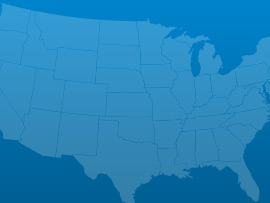There are 2,900 dams in Massachusetts with more than half of them being large enough to pose risk to human life and property. Many dams in Massachusetts were built during the industrial revolution and are now between 100 and 200 years old. Less than 10% are still serving their original intended purpose and more than 56% of all dams in the Commonwealth are privately owned. Many dam owners (public and private) lack the funds to perform required evaluations, let alone the repairs. Current environmental regulations make it difficult to remove obsolete or unsafe dams. A major disaster was averted at the last minute, thanks to quick action by Engineers and Contractors, in Taunton several years ago at the Whittenton Pond Dam (a 173-year-old wooden dam) where emergency repairs prevented the possible loss of life and significant property damage. In spring 2010, conditions at the Forge Pond Dam in Freetown required downstream residents to be evacuated and the State Office of Dam Safety to perform an emergency breaching. Providing a loan program to remove obsolete, unsafe dams and strengthening dam safety regulations will help eliminate threats to public safety. Addressing the current dam situation in Massachusetts will also improve water quality and fish habitat, which will promote recreational uses that will help the economy.
 Bridges
Bridges Dams
Dams Roads
Roads Transit
Transit Water and Wastewater
Water and WastewaterA: Exceptional, B: Good, C: Mediocre, D: Poor, F: Failing, ?: Incomplete
Each category was evaluated on the basis of capacity, condition, funding, future need, operation and maintenance, public safety, resilience, and innovation
Aviation
22 public-use airports
Bridges
487 of the 5,136 bridges are structurally deficient
Bridges
$182.70 million in bridge funds came from the Federal Highway Bridge Fund in 2011
Dams
293 high hazard dams
Dams
98% of the state regulated dams have an Emergency Action Plan
Drinking Water
$7.7 billion in drinking water infrastructure needs over the next 20 years
Energy
2.27 gigawatt-hours of renewable energy every year, ranking it 35th
Hazardous Waste
30 sites on the National Priorities List
Inland Waterways
90 miles of inland waterways, ranking it 35th nationally
Levees
69 miles of levees
Ports
17.3 million short tons of cargo in 2012, ranking it 29th nationally
Public Parks
$12.1 million of unmet needs for its parks system
Rail
11 freight railroads covering 896 miles across the state, ranking 41th nationally by mileage
Roads
7,340 of the state’s 36,330 public roads are major roads, and 19% are in poor condition
Roads
$2.3 billion a year in costs to motorists from driving on roads in need of repair, which is $478 /yr per motorist
Schools
$4.3 billion in estimated school infrastructure funding needs
Transit
383 million annual unlinked passenger trips via transit systems including bus, transit, and commuter trains
Wastewater
$8.0 billion in wastewater infrastructure needs over the next 20 years

March 03, 2017
As the President’s repeated in his address to Congress his pledge to dramatically increase infrastructure spending to the tune of $1 trillion, various Congressional Committees

March 01, 2017
On Tuesday night, President Trump addressed a joint-session of Congress for the first time in his presidency. Infrastructure was among the many issues he discussed.

February 28, 2017
U.S. motorists set a new record for vehicle miles travelled (VMT) in 2016, driving over 3.2 trillion miles, an increase of 70 billion miles from

February 17, 2017
Romantic dates, the Grammy awards and celebrating black history are not the only milestones of this week; the Oroville dam crisis in California and the